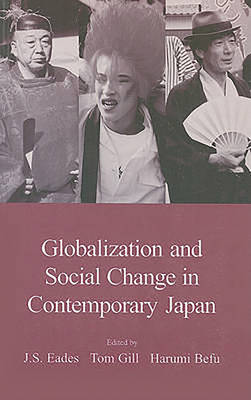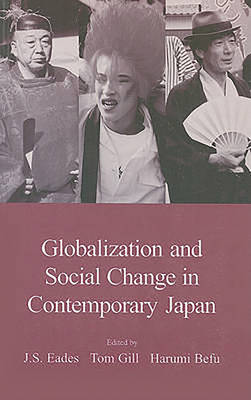
- Afhalen na 1 uur in een winkel met voorraad
- Gratis thuislevering in België vanaf € 30
- Ruim aanbod met 7 miljoen producten
- Afhalen na 1 uur in een winkel met voorraad
- Gratis thuislevering in België vanaf € 30
- Ruim aanbod met 7 miljoen producten
Zoeken
€ 38,45
+ 76 punten
Omschrijving
Analysis of Japanese society has been hampered by its use of static models: by its assumption that there is a unique and unchanging structure explainable by reference to a handful of native terms. That approach was always suspect, and has been further undermined by the fact of globalization, in which interactions between Japan and the rest of the world have become faster and further-reaching than ever before. This collection of papers, by a varied team of anthropologists and sociologists, is a bold attempt to come to terms with change, by putting a wide range of aspects of contemporary Japanese society under the microscope. Some of the studies look at macro phenomena such as patterns of international migration (Befu), business internationalization (Sedgwick), educational reform (McVeigh) and trends in values revealed in statistical surveys (M���¶hwald). Others examine ground-level change as experienced by particular social groupings: women in the workplace (Bishop), casual laborers (Gill), yakuza gangsters (Herbert) and members of the Burakumin community of former outcastes (Davis). Two papers examine the impact of globalization and change on aspects of traditional culture: the craft of making Buddhist altars (Eades et al) and the practice of ascetic mountain worship (Riessland). A concluding chapter takes a broader perspective, on the issue of how various theoretical approaches to Japanese society have attempted to interpret emotions (Clammer).
Specificaties
Betrokkenen
- Auteur(s):
- Uitgeverij:
Inhoud
- Aantal bladzijden:
- 304
- Taal:
- Engels
- Reeks:
Eigenschappen
- Productcode (EAN):
- 9781876843014
- Verschijningsdatum:
- 7/09/2000
- Uitvoering:
- Paperback
- Formaat:
- Trade paperback (VS)
- Afmetingen:
- 137 mm x 213 mm
- Gewicht:
- 417 g

Alleen bij Standaard Boekhandel
+ 76 punten op je klantenkaart van Standaard Boekhandel
Beoordelingen
We publiceren alleen reviews die voldoen aan de voorwaarden voor reviews. Bekijk onze voorwaarden voor reviews.








